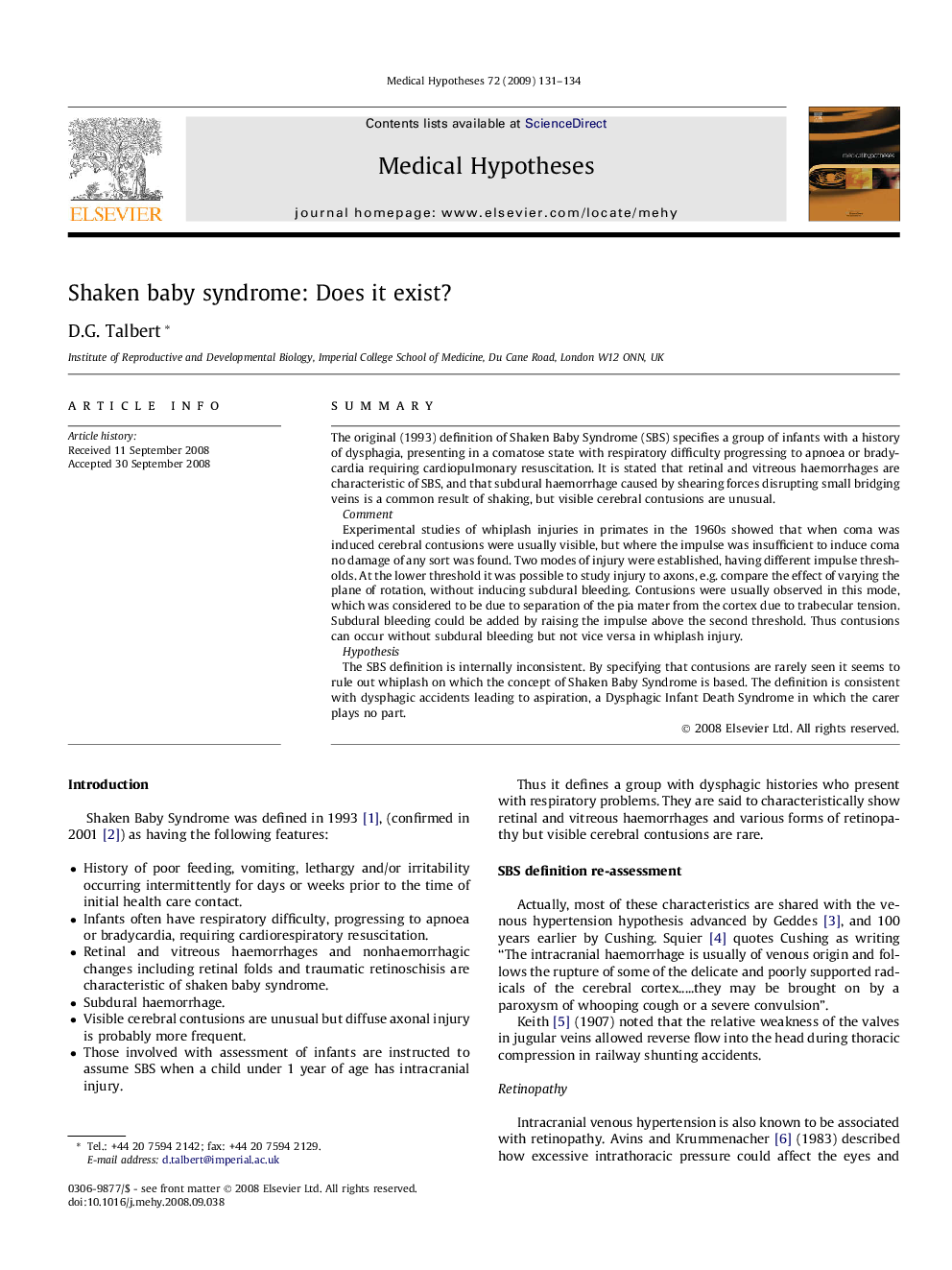| Article ID | Journal | Published Year | Pages | File Type |
|---|---|---|---|---|
| 2490619 | Medical Hypotheses | 2009 | 4 Pages |
SummaryThe original (1993) definition of Shaken Baby Syndrome (SBS) specifies a group of infants with a history of dysphagia, presenting in a comatose state with respiratory difficulty progressing to apnoea or bradycardia requiring cardiopulmonary resuscitation. It is stated that retinal and vitreous haemorrhages are characteristic of SBS, and that subdural haemorrhage caused by shearing forces disrupting small bridging veins is a common result of shaking, but visible cerebral contusions are unusual.CommentExperimental studies of whiplash injuries in primates in the 1960s showed that when coma was induced cerebral contusions were usually visible, but where the impulse was insufficient to induce coma no damage of any sort was found. Two modes of injury were established, having different impulse thresholds. At the lower threshold it was possible to study injury to axons, e.g. compare the effect of varying the plane of rotation, without inducing subdural bleeding. Contusions were usually observed in this mode, which was considered to be due to separation of the pia mater from the cortex due to trabecular tension. Subdural bleeding could be added by raising the impulse above the second threshold. Thus contusions can occur without subdural bleeding but not vice versa in whiplash injury.HypothesisThe SBS definition is internally inconsistent. By specifying that contusions are rarely seen it seems to rule out whiplash on which the concept of Shaken Baby Syndrome is based. The definition is consistent with dysphagic accidents leading to aspiration, a Dysphagic Infant Death Syndrome in which the carer plays no part.
